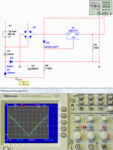djnik1362
Full Member level 2
Hi
I work on a circuit that has a 24 VAC sin wave input as a reference.
This input can't be used as a supply input.
I want to design a power provider that it's output follows mentioned sin wave at positive levels.
It means my power provider voltage level must be half-sin wave at positive level.
This power provider can provide 1.5 A at voltage level 2 volt below maximum of 24 VAC input.
I must first fed this input to a Diode Bridge and then use bridge positive voltage as source for some power sections. I know that with using a LDO regulator such LM317 this scheme can be designed .
Can you help me ?
Thanks for your support.
I work on a circuit that has a 24 VAC sin wave input as a reference.
This input can't be used as a supply input.
I want to design a power provider that it's output follows mentioned sin wave at positive levels.
It means my power provider voltage level must be half-sin wave at positive level.
This power provider can provide 1.5 A at voltage level 2 volt below maximum of 24 VAC input.
I must first fed this input to a Diode Bridge and then use bridge positive voltage as source for some power sections. I know that with using a LDO regulator such LM317 this scheme can be designed .
Can you help me ?
Thanks for your support.
